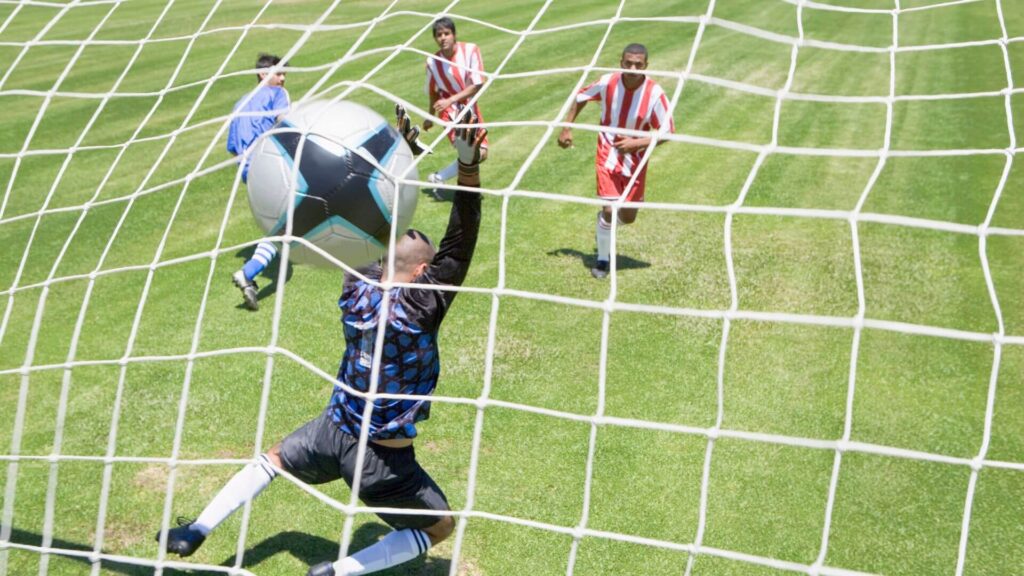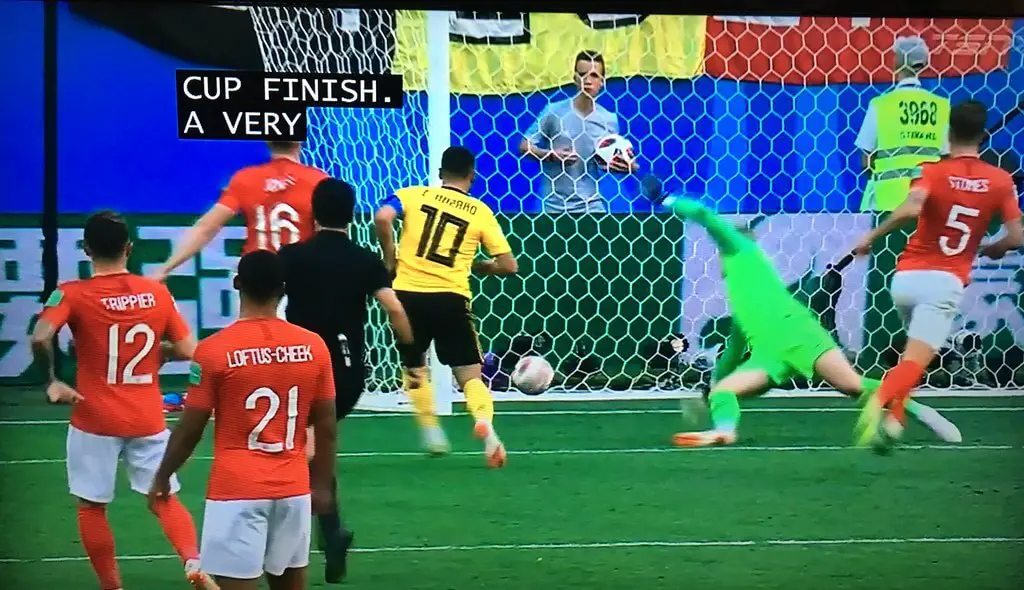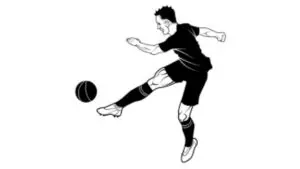What is finishing in soccer?
First off, Soccer is a sport that requires many different skills and abilities to be successful. While passing, dribbling, and teamwork are all important components of the game, perhaps one of the most crucial is the ability to finish.
In this post, we’ll take a closer look at what “finishing” means in soccer, why it’s so important, and how players can improve their finishing skills.
Quick Navigation
-
What Is Finishing In Soccer?
- Clinical Finisher Meaning
- The Role of Teamwork in Creating Scoring Opportunities
- Different Types of Shots and Finishes Used in Soccer
- The Importance of First Touch in Finishing
- Perfecting Your Weaker Foot
- The Value of Anticipation
- Mastering the Volley
- Heading for Placement vs Power
- Near Post vs Far Post Finishing
- Mastering the Chip Shot
- Creating Space in the Box
- Penalties Under Pressure
- The Importance of Positioning in Finishing
- Why Is It Hard To Score In Soccer?
- Why Are Goals So Rare In Soccer Nowadays?
- Final Thoughts
What Is Finishing In Soccer?
Finishing in soccer is the action of scoring a goal. This can refer to both the act of physically putting the ball into the net or the skill and ability of a player to convert chances into goals.
In other words, finishing is the result of all the hard work that a team puts into creating scoring opportunities.
A great finishing touch can make the difference between a win and a loss.
During a soccer game, there is a lot of pressure coming from your fans, teammates, and coaches.
That’s the external pressure and it’s always going to be there. But you have to be able to handle this pressure and be more confident when you’re in front of the goal.
Why is Finishing Important in Soccer?
Scoring goals is, of course, the ultimate goal of the game. Without finishing, a team’s hard work in creating scoring opportunities goes to waste.
Finishing is also important because it can greatly impact a player’s confidence and ability to perform at their best.
Players who are consistently able to finish their chances are often more confident and effective on the field.
How to Improve Finishing in Soccer?
There are several things that you can do to improve your finishing skills in soccer. Some of the most important include:
- Practising: The more you practice finishing, the better you will get. Try to find a quiet place where you can work on your finishing skills without distractions.
- Improving technique: Proper technique is essential to good finishing. Make sure you are using the correct body position, shot power, and aim.
- Visualizing: Visualizing your shots before taking them can help improve your finishing. Imagine yourself scoring the goal, and focus on the mechanics of the shot.
- Developing Mental Toughness: Finishing often requires mental toughness and confidence. Players should work on developing these qualities through visualization and other mental training techniques.
Clinical Finisher Meaning

A “clinical finisher” in soccer is a player who consistently scores goals with a high degree of accuracy and precision.
This term is often used to describe a player who can convert their chances into goals, no matter how difficult the opportunity may seem.
Clinical finishers are known for their coolness under pressure and their ability to put the ball into the back of the net with minimal fuss.
They are highly valued in the sport for their ability to consistently deliver goals, which can greatly impact a team’s success on the field.
Also known as ice cold finisher, clinical finishing is when a striker remains calm and cool in front of the goal and doesn’t panic.
Many players such as C. Ronaldo, E. Haaland, or Lewandowski are known to be clinical finishers. They do have the ability to easily score a goal when they are inside the penalty area.
Remember, only the defender is truly under pressure because he knows a foul inside a penalty area is too costly and can cause a penalty. So, he is going to be very careful.
This means the striker has the advantage.
A clinical finisher always sets himself up and only thinks about the goal.
A clinical finisher always knows that the angles of the goal are his friends. So, whether it’s high or low, he always targets them to make it more difficult for the goalkeeper to save it.
The Role of Teamwork in Creating Scoring Opportunities
Teamwork plays a crucial role in creating scoring opportunities in soccer.
A well-coordinated and effective team can work together to create chances and set up their teammates for success.
Good passing and movement off the ball can open up space for attackers, allowing them to get into dangerous positions and put themselves in a position to score.
When all players are working together, the team is able to maintain possession, control the tempo of the game, and create opportunities to score.
Moreover, players can also use teamwork to press the opposition and win the ball back in advanced areas of the field, creating scoring opportunities in transition.
In short, the importance of teamwork in soccer cannot be overstated, and it is a crucial factor in creating scoring opportunities and helping teams achieve success on the field.
Different Types of Shots and Finishes Used in Soccer

In soccer, there are many different types of shots and finishes that players can use to score goals.
Some of the most common include the standard shot, the chip shot, the lob, the volley, and the header. (We will cover them in more detail later)
Players must adjust their approach based on the game situation and conditions.
For example, a player may use a chip shot to beat an advancing keeper, while a volley may be used to finish a well-placed cross from a teammate.
In addition, players may also use more creative shots, such as the backheel or the scissors kick, to surprise their opponents and score spectacular goals.
Regardless of the type of shot or finish used, the key is to find a way to get the ball into the back of the net, and players must be able to choose the right shot for the right moment.
The Importance of First Touch in Finishing
Having a quality first touch is vital for setting yourself up to finish. Being able to bring down passes or long balls under control instantly gives you more time and space to compose yourself and pick your shot. A poor first touch often means rushing your shot or the chance of being snuffed out by defenders.
Mastering various First Touch techniques like the cushioned trap, thigh trap, chest trap and flick-ons expands your options.
Perfecting Your Weaker Foot
While most players have a dominant foot, truly elite finishers have worked tirelessly to make their weaker foot nearly as effective.
Defenders will look to show you down the line and onto your weaker side, so you must punish them by finishing cleanly with your weaker foot.
Dedicated practice to improve the accuracy and power of your weaker foot will make you more unpredictable in the box.
The Value of Anticipation
Top scorers have an innate ability to anticipate how the play will unfold in the box and position themselves intelligently.
Recognizing where the ball is likely to drop on crosses, judging the flight of shots saved by the keeper and reacting quickest after rebounds all depend on razor-sharp anticipation. Their reading of the game allows them to stay a step ahead.
Mastering the Volley

When the ball is coming out of the air, a perfectly executed volley can create a lethal scoring chance. Being able to strike the ball cleanly while it’s still rising takes tremendous timing and technique.
Connecting with a volley sweetly without having to control it gives keepers little time to react. The ability to volley from both feet is a potent weapon.
Heading for Placement vs Power
Judging whether to guide a header for placement or generate power depends entirely on the cross.
For slower, looping crosses, a header aimed toward the corners may beat the keeper. But for fast, driven crosses, a powerful header on target can be effective.
Adjusting your header technique based on the service allows you to maximize scoring chances.
Near Post vs Far Post Finishing
Knowing when to target the near or far post when going 1v1 with the keeper will improve your chances of scoring. If the keeper is positioned centrally, a shot aimed toward the far post forces him to fully extend and lowers his chances of saving it.
Conversely, against a keeper shaded toward the far post, targeting the near post area can catch him off guard.
Mastering the Chip Shot
When the keeper charges off his line, the perfectly weighted chip can beat him. It’s a technical skill that requires practice and finesse.
Getting the height and weight of the chip just right to arc over the keeper and nestle into the net takes immense skill.
When executed correctly, the chip provides a magical scoring opportunity.
Creating Space in the Box
The crafty movement and lateral agility needed to manufacture space for yourself in a crowded penalty area is an underrated skill.
Spinning off defenders at the perfect moment, making darting near post runs and feinting one way before going the other are small details that help elite scorers engineer the split second of space needed to unleash a shot.
Penalties Under Pressure
Stepping up to convert from the penalty spot with the game on the line requires steely nerves. The mental aspect is just as important as the technique.
Coping with the pressure and ignoring distractions is vital. Composure to pick your spot and trusting your technique is what the top scorers consistently demonstrate in these high-leverage moments.
The Importance of Positioning in Finishing
Positioning is a critical aspect of finishing in soccer.
A player’s position on the field can greatly influence their ability to score goals.
Good positioning can provide a player with more time and space to control the ball, make a decision, and execute a shot.
It can also help a player get into a more favourable shooting angle, making it easier to beat the goalkeeper and score.
Conversely, poor positioning can limit a player’s options, making it more difficult to score.
This is why it is so important for players to understand the importance of finding space, making runs, and getting into good positions to receive the ball.
Whether a player is a striker, midfielder, or defender, understanding the value of good positioning can help them become more effective in front of a goal and increase their chances of scoring.
Why Is It Hard To Score In Soccer?
It is hard to score in soccer because you are facing other teams and players who also know what they are doing. They are fit, physically, technically and tactically prepared. Meaning, the opponent’s defence will likely be tough to dribble and score. And this is what makes soccer so great and exciting.
Soccer is based on strategies. No professional team can enter the pitch without a specific strategy to use in the game. This is why some games can be tough to score. This is because both managers use different tactics to beat each other’s tactics.
Sometimes, you may wonder how can a small team beat a huge team. Well, this is because most of the time, the manager of the big team has failed and has been tactically beaten.
So, if a team doesn’t manage to score a goal, it means the opposing manager has done a good job tactically preventing it.
Why Are Goals So Rare In Soccer Nowadays?
Unlike tennis, basketball, handball or any other sport, goals are so rare in soccer and this is due to diverse reasons.
First, a soccer game lasts for 90+ minutes, meaning, players get tired and don’t have the same intensity and energy as at the kick-off. Secondly, the size of the pitch(about 100 metres long). Thirdly, each team has become very tactical. You can’t just run all the way to score. Rather, you have to analyse your opponent and wait for their mistakes. This usually reduces the number of goals during a soccer game.
Final Thoughts
finishing is a crucial aspect of soccer and can greatly impact a player’s success on the field.
By practising, improving technique, visualizing, and developing mental toughness, you can greatly improve your finishing skills and become more effective on the field.
No matter which position you are in, any player can be great at finishing.
All it takes is some practice and repetitions and by the time you realize it, you will be great at finishing in soccer.
Do you have any questions? Are you a striker, defender, or midfielder? What is your speciality in soccer? Let us know in the comment section below.


